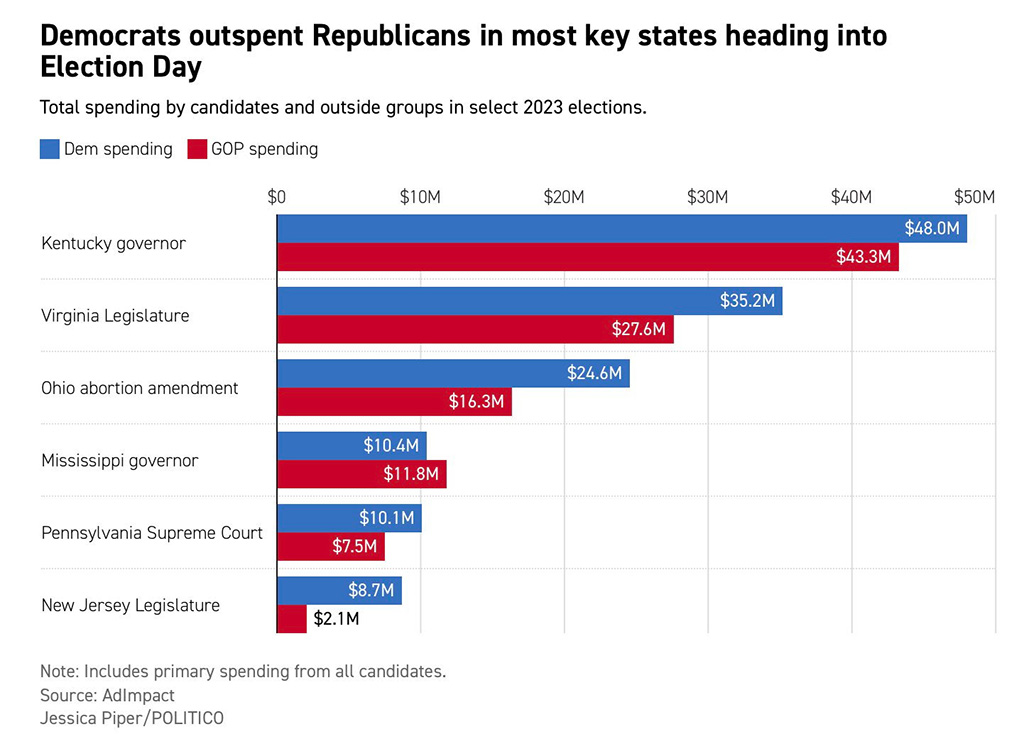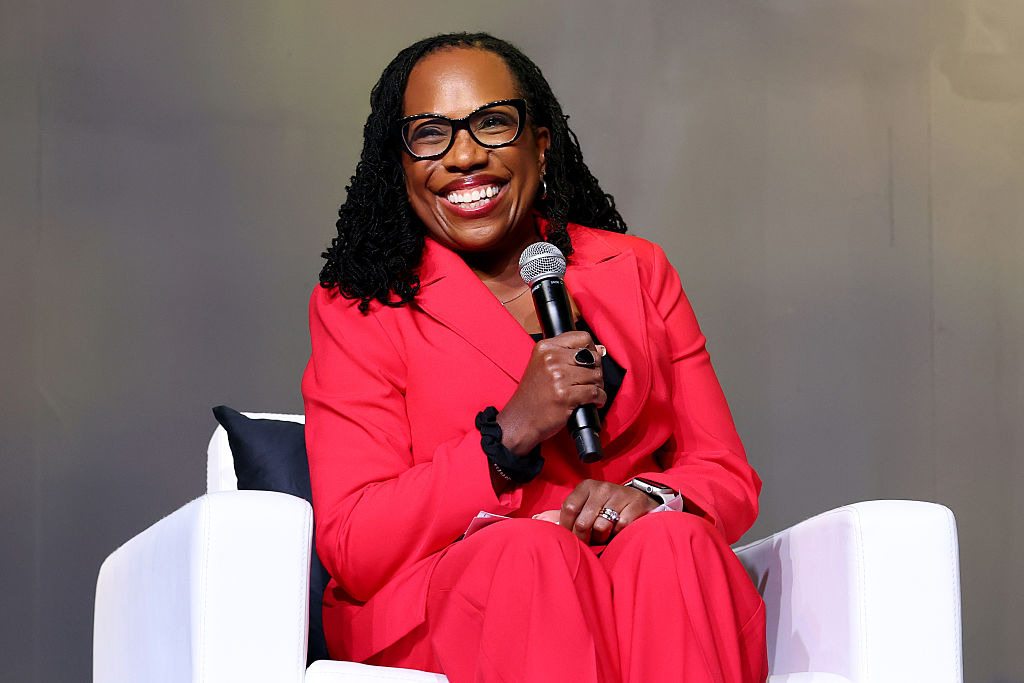Last night was a disappointment for Republicans and pro-lifers in several election contests. It’s unwise to draw too many lessons from these outcomes, because as is typical for off-years, the effects can be exaggerated. But we’re in the business of overreading signals in American political commentary as if we’re a bunch of awkward teenagers, so let’s dig into the results.
2022 Old and busted: Trump is a drag
2023 new hotness: Trump is essential
Yesterday afternoon, anticipating the outcomes, I posted this on X: The lesson of the 2023 elections could well be that having thoroughly flipped with Democrats to become a party of presidential year voters, the GOP needs Trump more than ever atop the ticket. I think this lesson is wrong, but it makes a certain sense.
While the night was still young, Trump supporters were indeed already expressing this view, and it will be their preferred takeaway — ignoring the fact, of course, that he was most closely associated with the failed candidacy of Daniel Cameron in Kentucky, the most prominent race of the night, who ran behind other statewide Republicans in a disappointing loss to incumbent governor Andy Beshear.
It’s fine for people to frame this as a need for Trump himself atop the ticket. But as Patrick Ruffini, whose new book about the shifting Republican coalition is out this week, commented this morning: “The claim that only Trump can mobilize base turnout is complicated by the fact that Republican turnout was just fine in the midterms. The problem was that they lost Independents.”
You go to the polls with the coalition you’ve got
What the national Republican Party, to the extent it still exists as an entity, needs to grasp about their current reality is that the new coalition they are building of more diverse voters who are more working class in tendency makes for a reversal of their former position.
Since 1992, the GOP has been a party that broadly speaking performed better in midterm and off-year elections than it did in presidential years. Their voters were more active and motivated in those years, with rare exceptions. But with the lengthy cultural sort that has taken place, the GOP has now effectively exchanged high propensity voters for low propensity voters, creating a need to motivate that more diverse coalition by appealing to those presidential year voters.
As one Democrat X user noted last night: “The problem with ceding all the educated inner-ring suburban moms who have the whole month charted out on the refrigerator to the Dems, and winning over divorced, personally messy laborers in the sticks is that the neurotic planners always show up.”
The other problem is that Republicans are shifting from being a party of corporate dollars and big donors to non-corporate dollars and small donors. The fact that Cameron, a Mitch McConnell protégé, was by far the most prominent statewide contest; after all the effort Glenn Youngkin put into raising money to win the state legislature; and given the centrality of the Ohio abortion amendment, that all three Republican efforts got outspent should frighten them. Ronna Romney McDaniel’s RNC notoriously refused to help close the gap in the final month of the Virginia contests, only to see Youngkin’s effort fall a few seats short in each chamber. That’s money that could’ve made a difference.

Beshear wins without coattails
This election night turned out according to expectations. Cameron, while a potentially good politician, chose to challenge Beshear at a bad moment and polled behind him consistently. Beshear, who consistently rates among the most popular governors in the country, has benefited from being a weak executive in a state with a Republican legislature that can overrule his vetoes. He also proved a capable hand responding to disasters, which helped him improve on his razor thin margin over Matt Bevin in 2019 (when he won by less than 0.4 percent of the vote). As Matt Yglesias writes this morning:
Unfortunately, while Andy Beshear winning is good for the vibes, the substantive stakes here are pretty low. Governor of Kentucky is a weak office, and his veto can be easily overridden.
The Andy Beshear Phenomenon is very important, though. Swing voters are real, every state has a median voter, politics is mostly about persuasion not base-mobilization, and the old-fashioned Democratic Party pitch about Medicaid, public education, and abortion rights has legs in places where the national party is dead thanks to climate politics and racial issues.
Between Beshear, Maryland’s Wes Moore and Pennsylvania’s Josh Shapiro, Democrats have a trio of Generation X governors along the Mason-Dixon who all track as moderate despite their leftward tendencies. All could conceivably be on a national Democratic ticket in the future.
Puffy vest abortion politics doesn’t play
The dominant focus of the national media will be that this is one more point toward their thesis that everything going on in American politics is due to the abortion issue. While that’s entirely predictable, and it’s certainly true regarding ballot issues like the Ohio measure which cloaked its radicalism in vague language, an excuse that appeals to the GOP’s donor class and the consultants who feed off them, it strikes me as forgetful of the time before the Dobbs decision.
Consider the past decade of Virginia abortion politics for the moment. In 2013, Ken Cuccinelli lost the governor’s race to Terry McAuliffe by less than 3 percent, a stunning outcome at the time considering that McAuliffe had led by double digits in many polls. The Cuccinelli loss, in the minds of more than one Virginia pro-life conservative, came down to his unwillingness to push back against McAuliffe’s attacks on the issue, instead just sticking to the script of jobs and economic growth. Research after the election found that had Cuccinelli fought back, he could’ve won — but the point is, the abortion issue clearly played enough to decide the race (despite insider fiction at the time that blamed Ted Cruz’s Obamacare filibuster).
In 2014 and 2017, Ed Gillespie — a Washington insider who lacked Cuccinelli’s hardcore social conservative reputation — came 0.8 percent away from knocking off powerful incumbent Democratic senator Mark Warner, then lost by a wider margin for the governorship to Ralph Northam. Both times, Gillespie tried to stick to the Republican script of rape, incest, life of the mother exceptions, and pushed back against accusations from Northam that he’d ban contraception. But even for a guy who tracked as “generic Republican” on the issue, it was a drag.
The only time that the abortion issue has benefited Republicans in Virginia came from that same Ralph Northam, who made the horrible mistake of going on a radio show and being honest about abortion, triggering the parade of blackfaced terribles for Virginia Democrats that ended with Donald Trump bashing the hell out of Hillary Clinton on the debate stage and Glenn Youngkin leading a clean sweep in 2021. Other than that, abortion has been a constant drag in a state that is socially liberal on the issue and hasn’t gone to a Republican presidential candidate since 2004.
In this case, Democrats hammered every Republican in the state in massive ad campaigns as abortion extremists. Even though Youngkin again stuck to the script of pushing for a fifteen-week ban, and even though he again has the demeanor of a moderate, genial, non-Bible thumping firebreather on the subject, it just wasn’t enough.
The lesson: Puffy vest versions of post-Dobbs abortion politics just don’t make a difference. Republicans in purple territory at the state and local level still have not figured out a way to navigate this new reality where they can’t just say it’s an issue for the courts. Until they do, if Republicans are going to win outside of red states and districts, it’s in spite of the abortion issue, not because of it. The GOP had enough of a problem with abortion when they were a party of high propensity single issue voters. Now, with a more economically diverse party of low propensity voters, that’s going to prove even more of a challenge.


























Leave a Reply